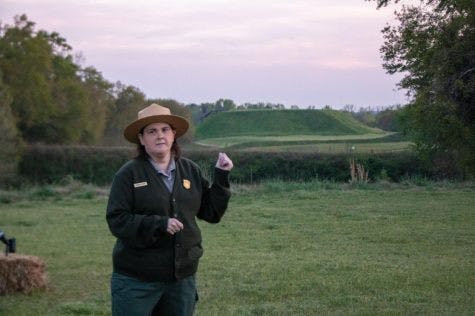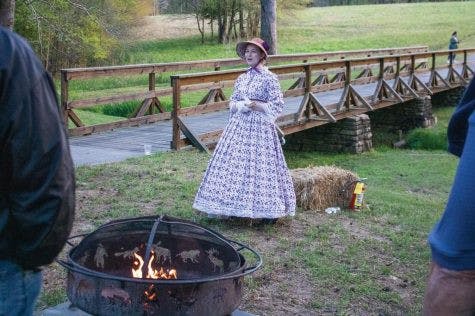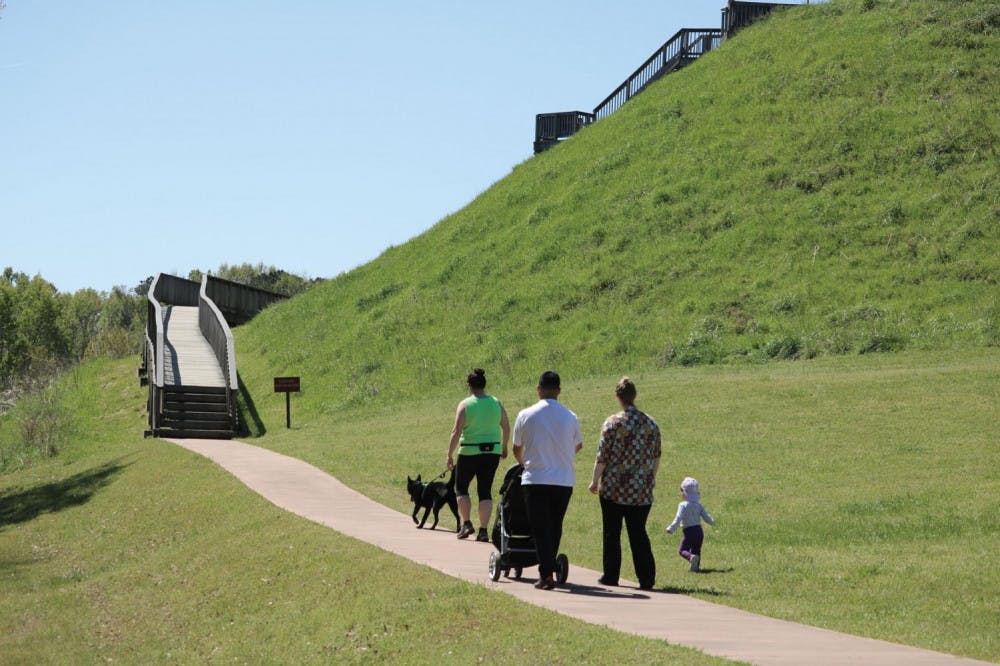Macon’s Ocmulgee National Monument has become Ocmulgee Mounds National Historical Park due to a larger public lands bill that has affected over two million acres of American public lands nationwide. This new distinction as a National Historical Park also brings along a major expansion with the Ocmulgee Mounds quadrupling in size, according to The Telegraph.
The park began in 1934 during the Great Depression with a total of only 678 acres before increasing to 702 acres; the new expansion will now increase the park size to approximately 2,800 acres. President Donald Trump signed the bill into action on March 12 to change the name.
Jim David, superintendent of the Ocmulgee Mounds National Historical Park, said that the designation as a National Historical Park came after much deliberation.
“Several people in Washington D.C. believed that, with only 3,000 acres, we were too small to be a straight National Park, so we came up with the compromise to make it Ocmulgee Mounds National Historical Park,” David said.
David said that tourists are immensely important to the Macon area and the Ocmulgee Mounds National Historical Park. With a total of 330,882,751 total recreation visitors to national parks in 2017, this new status as a National Historical Park marks an important time in Macon’s history, according to the National Park Service.
“We hope that with the distinction of National Historical Park, more people will associate it with the National Park Service to hopefully being more visitors in,” David said.

Future plans are already in place for the new Ocmulgee Mounds National Historical Park.
“With this expansion, there are opportunities to put additional trails in with the long range plan of the Ocmulgee Heritage Greenway always showing trails going throughout the park, increasing recreational opportunities and access to Lamar mounds,” David said.
The Lamar mounds are named after a culture known as the Lamar, who repopulated the area in the 1300s once the Ocmulgee began to die out. The city center was located three miles south of Macon in the swamps of the Ocmulgee River.
The town site is currently part of the Ocmulgee Mounds National Historical Park, but it is closed to the public except during times when specific tours guided by rangers are given, according to the National Park Planner.
These added trails would provide access to this very rarely seen area due to private property between the mound sites.
“Once we acquire the property leading to Lamar mounds, we will have the opportunity to get our equipment into the area and also lead more visitors into that site,” David said.
The expansion will happen mostly along the same side of the river where the Indian mounds are seen.
“The most important thing about that property is that it is an archaeological site,” David said. “The area that everyone knows of is the Great Temple Mounds, where it is believed that the leaders lived. The flatlands along the river is where the everyday workers are living making crops, building pottery, et cetera. By acquiring this land, we protect the area where the everyday society person lived.”

The acquiring of this property is the next step in the continuation of the Ocmulgee Mounds National Historical Park. While the bill signed by President Trump did expand the boundaries of the park, it did not include the money to buy the land, according to The Telegraph.
Some of the land will be donated by local supporters, while other land will be bought with help from the Ocmulgee National Park and Reserve Initiative through their fundraising campaigns.
The last part of the new distinction as a national historical park is a resource study that will be conducted along the Ocmulgee River from Macon to Hawkinsville. The study will determine which natural and cultural sites should be preserved and added to the park.
“With these studies, we may see a 40,000-50,000 acre park that will become Ocmulgee National Park and Preserve,” David said. “That is several years down the line, but the bill does call for that special resource study.”
David is set to retire on May 31 after 22 years, making him the last superintendent of Ocmulgee National Monument and the first superintendent of the Ocmulgee Mounds National Historical Park.
“As for what we have now and what we are expanding into, what is so unique about this resource is that this is a site that we can prove has been occupied since the Ice Age. There are very few places in the country that can prove that archaeologically. That to me is a phenomenal story that can be told here that very few other places can tell of human habitation. You can take a beautiful walk while looking at historical resources, and the view on top of the Temple Mound is spectacular. We have a great deal to offer our visitors,” David said.
Macon’s Ocmulgee National Monument gets new distinction as Ocmulgee Mounds National Historical Park

The Ocmulgee National Park is home of the Great Temple Mound and Town Site. A family hikes up the trail and stairs to see an overview of downtown Macon.
Park Ranger Angela Bates explains the cultural history of the Ocmulgee people during the lantern tour on March 29. Photo by Marianna Bacallao
On the Ocmulgee lantern tour, Marci Daugherty plays the role of Mrs. Dunlap, a Civil War-era wife. Photo by Marianna Bacallao




